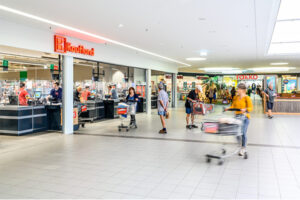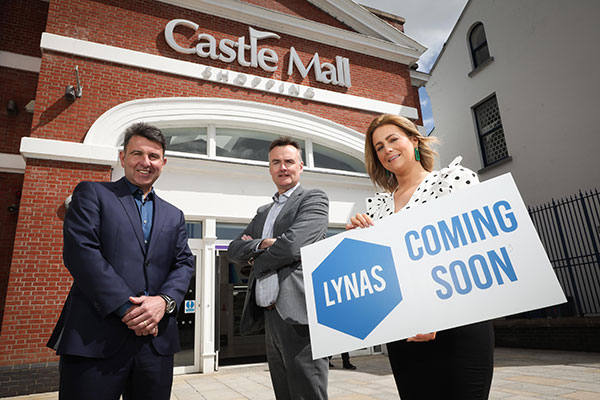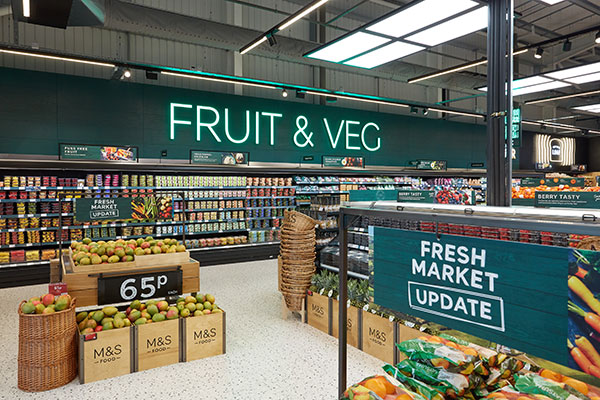This topic was featured in detail in our latest print issue „Man Must Eat–The (Increasing) Importance of Food Anchors for the Placemaking Industry” which you can read here:
“Food anchors offer new experiences of taste”

Nemanja Bucinac
Head of Retail Leasing at MPC
Credit: MPC Properties
WHAT ECONOMIC BENEFITS DOES A SHOPPING CENTER GAIN FROM A TENANT MIX WITH A STRONG FOOD ANCHOR?
What we currently see on the global market is a big switch from size to experience. Food anchors currently represent one of the best sources of experience for shoppers, because they not only offer food and basic needs, but their offers are based on discovery, new taste, and interactivity.
Customers can expect to find the best that a food anchor can offer. In general, shopping centers are excellent promotional tools for them, since they are part of the overall Food & Beverage strategy. This global change attracts customers with a higher purchasing power as it represents a possible new journey for them. It also consistently leads to shopping centers achieving higher revenues, higher footfall, as well as an increase in the overall attractiveness.
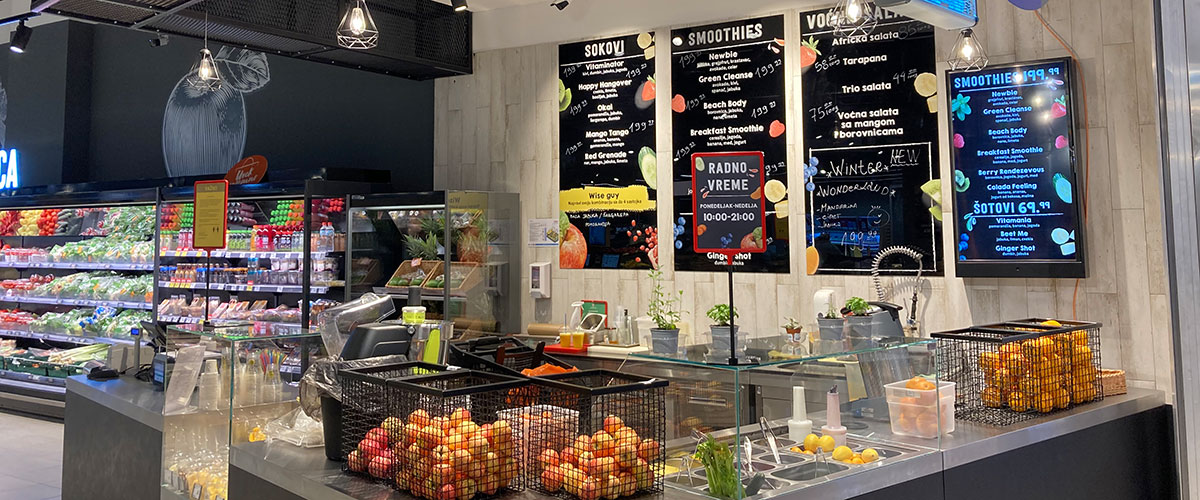
WHAT, IN RETURN, DO SUPERMARKET CHAINS GAIN FROM THEIR PRESENCE IN SHOPPING CENTERS, COMPARED TO STAND-ALONE LOCATIONS?
The shopping center customer is very different compared to the stand-alone supermarket shopper. In this situation, the purchasing process is driven by instant buying, which is, by its nature, opposite to the rational and planned one. Supermarket presence in shopping malls increases the number of customers, since the whole story is not based on pricing but on experience. As a result, supermarket chains are attracting new customers, and they are also increasing the quality of the average basket, which generally translates into higher income for both shopping malls and supermarkets. The flagship effect will continue to influence customer appreciation of the brand, even when buying at stand-alone locations, as well as on e-commerce platforms of the same chains. As a result, their presence in shopping malls could be treated as a very strong marketing tool.
WHAT ARE THE MAIN PROBLEM AREAS THAT COULD AGGRAVATE THE CONSTRUCTIVE COOPERATION BETWEEN SHOPPING CENTERS AND FOOD ANCHORS?
What we can currently see on the global market is that there is a need for specialized shops with implemented micro concepts. The best example of that is the explosion of food halls everywhere. In such spaces, operators can be focused more on quality and the proximity of the customer. Another great option for food retailers is to sublease part of their space to micro specialists. This might have a very big impact on the overall footfall and turnover. Otherwise, the expectation is that the added value of food anchors may cease to exist as they may find themselves more and more challenged by e-commerce.
“More footfall from Monday to Friday”

Victor Fernandez
Asset Manager at Merlin Properties
Credit: Merlin Properties
WHAT ECONOMIC BENEFITS DOES A SHOPPING CENTER GAIN FROM A TENANT MIX WITH A STRONG FOOD ANCHOR?
The greatest benefit that a shopping center gains by having a food anchor is an increase in footfall from Monday to Friday, which are generally the most difficult days for shopping centers, especially in the morning. Consequently, this also results in an indirect benefit since these visits tend to be “service” operators’ clients, too, who are interested in telephone shops, hairdressers, beauty clinics, repair shops, dry cleaners, pharmacies, etc.
WHAT, IN RETURN, DO SUPERMARKET CHAINS GAIN FROM THEIR PRESENCE IN SHOPPING CENTERS, COMPARED TO STAND-ALONE LOCATIONS?
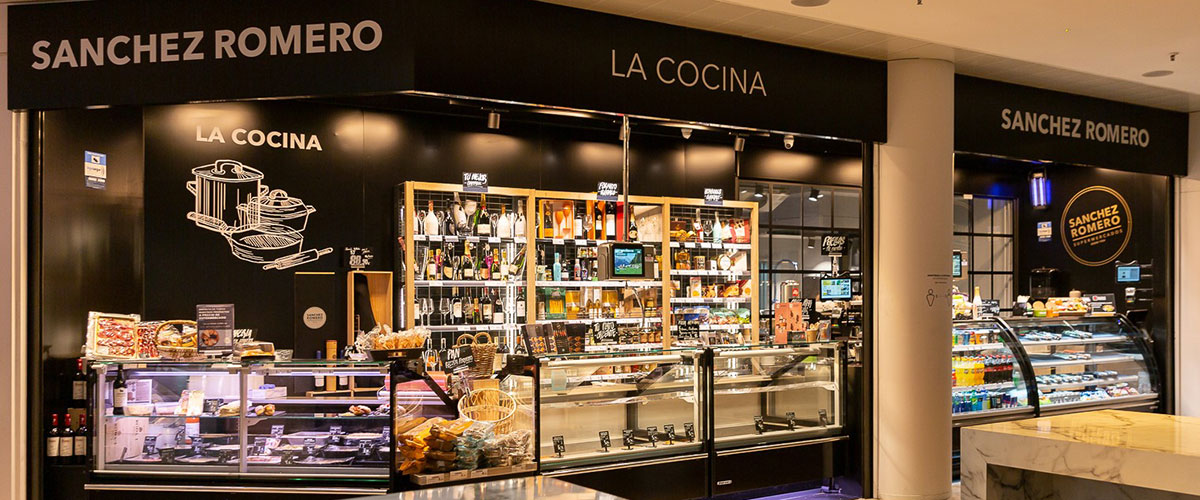
A street-side grocery store is simply a destination point and will never be able to take advantage of visits to malls for any other type of motivation. As an extra benefit, having a presence in a shopping center allows operators to enjoy a number of common facilities, such as parking, and things such as promotion costs, maintenance, cleaning, etc. can be shared with the rest of the tenants.
Another aspect is the joint marketing and promotion of the shopping center. The products sold by food operators are usually the same, but they can compete price-wise by reducing margins. There are also establishments that have incorporated gourmet spaces.
CAN YOU GIVE AN EXAMPLE OF A “SHOPPING CENTER – FOOD ANCHOR” PARTNERSHIP WITH PARTICULARLY HIGH SYNERGETIC COACTION?
In the food sector, there is an increasingly wide range of products on offer to complement the supermarket, such as stores specializing in gourmet products or take away homemade meals.
WHERE CAN WE SEE CONCRETE EXAMPLES OF INNOVATIVE CONCEPTS FOR THE COOPERATION OF SHOPPING CENTERS AND FOOD ANCHORS IN THE CONTEXT OF DIGITALIZATION AND SUSTAINABILITY?
Food operators are obliged to look for increasingly niche formulas. Organic supermarkets are a good example. They are much more active on social networks, where, in addition to shopping, users can attend workshops, participate in events, and discover local products with origin traceability.

WHAT ARE THE MAIN PROBLEM AREAS THAT COULD AGGRAVATE THE CONSTRUCTIVE COOPERATION BETWEEN SHOPPING CENTERS AND FOOD ANCHORS?
The greatest point of friction has been generated at grocery stores that change their formats, reduce their sales floor area, and incorporate other uses that may compete with the center itself. Generally, however, the coexistence is good.
“A virtuous cycle of increasing appeal”
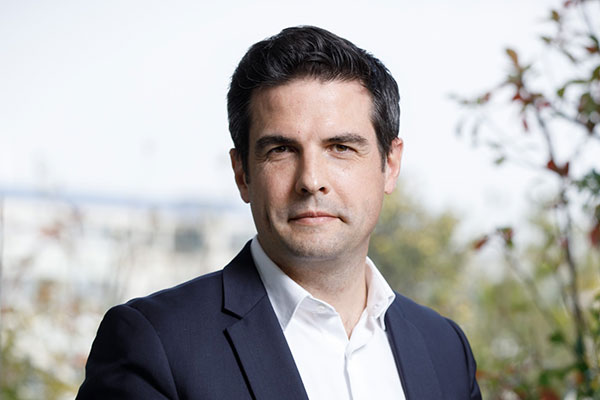
Maël Aoustin
CEO of Galimmo
Credit: Galimmo Real Estate Group
WHAT ECONOMIC BENEFITS DOES A SHOPPING CENTER GAIN FROM A TENANT MIX WITH A STRONG FOOD ANCHOR?
Food anchors are strong traffic drivers. Serving daily and essential needs, they bring regular, frequent, and recurrent flows of visitors. They attract a large and diverse customer base in terms of age and socio-professional categories. They reinforce shopping center attractiveness for all the other retailers. All this leads to a virtuous cycle of increasing appeal. The sanitary crisis put the combined food anchor–shopping center model in the spotlight, serving essential needs and proving to be much more resilient than other retail and shopping centers formats.
WHAT, IN RETURN, DO SUPERMARKET CHAINS GAIN FROM THEIR PRESENCE WITHIN SHOPPING CENTERS, COMPARED TO STAND-ALONE LOCATIONS?
Shopping centers are convenient and easily accessible locations, with high visibility, thereby making them popular destinations. They provide professional on-site management as well as other appealing features for customers looking for both convenience and social interactions: parking space, transport facilities, rest areas, social events, restaurants and coffee shops, places to meet, as well as services. Being part of a large and complete commercial place allows hypermarkets to welcome additional clients.
CAN YOU GIVE AN EXAMPLE OF A “SHOPPING CENTER – FOOD ANCHOR” PARTNERSHIP WITH PARTICULARLY HIGH SYNERGETIC COACTION?
This is typically the shopping center model in various European countries, especially in France, with hypermarkets being anchor stores to shopping centers and being operated by strong distributors, such as Cora for the Galimmo Group.
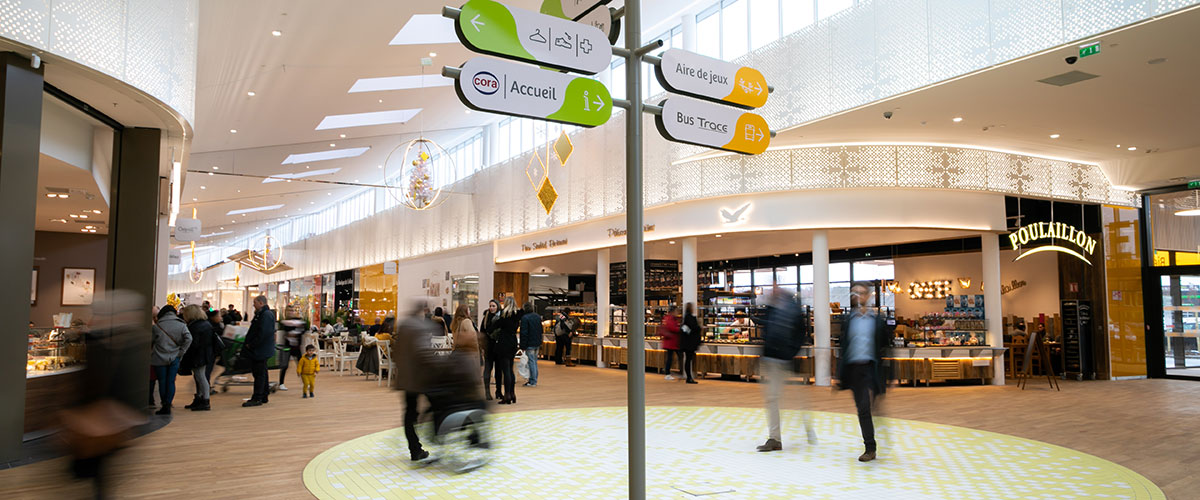
Beyond potential synergies in logistics and technical support, our partnership also covers customer communication, operational marketing, special events, e-commerce pickup points, initiatives for our shared communities, and development projects involving the reallocation of retail space.
WHERE CAN WE SEE CONCRETE EXAMPLES OF INNOVATIVE CONCEPTS FOR THE COOPERATION OF SHOPPING CENTERS AND FOOD ANCHORS IN THE CONTEXT OF DIGITALIZATION AND SUSTAINABILITY?
In the context of growing digitalization and enhanced sustainability concerns, several initiatives have been launched to drive the transition towards a carbon-neutral and environmentally-friendly economy, such as: photovoltaic installations on parking garages, rooftop vegetable gardens for shopping centers, shared order pickup point for hypermarkets and other retailers, and local producers’ markets at our shopping centers.
WHAT ARE THE MAIN PROBLEM AREAS THAT COULD AGGRAVATE THE CONSTRUCTIVE COOPERATION BETWEEN SHOPPING CENTERS AND FOOD ANCHORS?
One of the challenges is to make sure both the hypermarket and the shopping center have a complementary offer to cover the largest range of customer needs and expectations. New hypermarket shop-in-shop concepts, for example, need to be perfectly adapted to the existing shopping center retail mix.
“The innovative 15-minute city”

Francois Matray
CEO of MRM
Credit: David Lebrun
WHAT ECONOMIC BENEFITS DOES A SHOPPING CENTER GAIN FROM A TENANT MIX WITH A STRONG FOOD ANCHOR?
The purpose of a retail space is to offer an assortment of shopping options and meet the various clients’ needs. A strong food anchor gives people another reason to visit, and, for the shopping center, it generates higher footfall and recurring customer flows.
WHAT, IN RETURN, DO SUPERMARKET CHAINS GAIN FROM THEIR PRESENCE IN SHOPPING CENTERS, COMPARED TO STAND-ALONE LOCATIONS?
Compared to a stand-alone location, the supermarket benefits from the size of the retail offer at the respective shopping center. There are stores that complement its offer and, thus, enrich the experience of its customers via: other products, services, hairdressers, dry cleaners, beauty shops, pharmacies, sports stores, fitness centers, coffee shops, restaurants, etc. Furthermore, the supermarket benefits from the shopping center layout and facilities (rest areas and parking). Supermarket customers can find everything in the same place, so there is a real element of convenience for them.
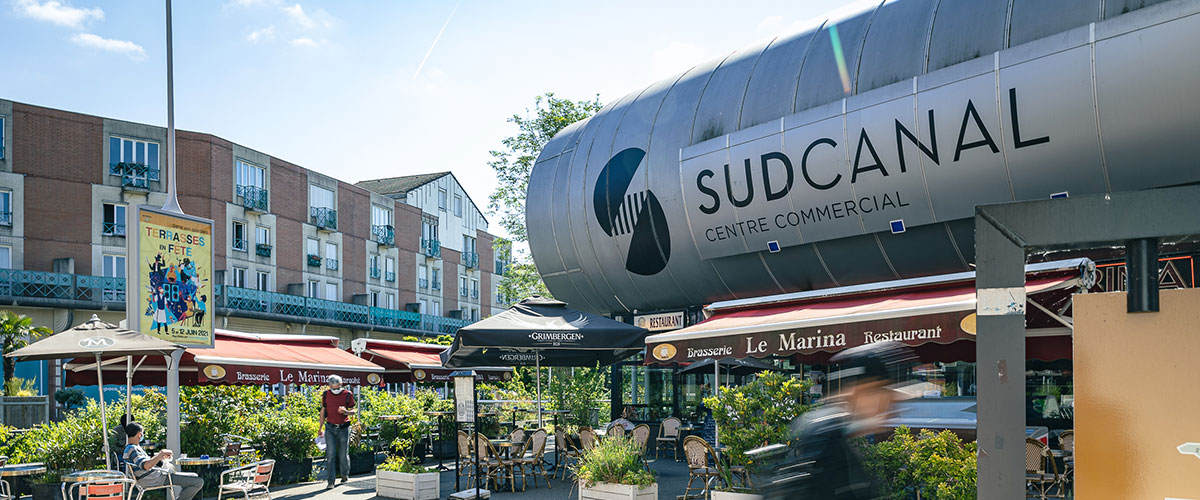
CAN YOU GIVE AN EXAMPLE OF A “SHOPPING CENTER – FOOD ANCHOR” PARTNERSHIP WITH PARTICULARLY HIGH SYNERGETIC COACTION?
In Montigny le Bretonneux, in the heart of the Saint-Quentin-en-Yvelines retail district, MRM owns and operates Sud Canal, a 11,600-square-meter open-air shopping center made of 30 small retail units and one supermarket. Thanks to its large and diversified food offer, combined with a mix of several other activities, it has become a one-stop shopping and food destination.
WHERE CAN WE SEE CONCRETE EXAMPLES OF INNOVATIVE CONCEPTS FOR THE COOPERATION OF SHOPPING CENTERS AND FOOD ANCHORS IN THE CONTEXT OF DIGITALIZATION AND SUSTAINABILITY?
Any project requiring work in common areas relies on a cooperation between the shopping center owner and the food anchor. That is the case for numerous new initiatives rolled out together in the context of digitalization and growing sustainability concerns, such as electric car charging stations, photovoltaic panels, parcel lockers, click & collect, and drive services.
Together, shopping centers and their food anchors could contribute to the concretization of the “15-minute city”, attempting to make all services and amenities residents need to live quickly accessible. That would entail reducing time spent driving, encouraging the collection of orders on site, protecting small retail businesses, strengthening the local fabric, and promoting local products.
WHAT ARE THE MAIN PROBLEM AREAS THAT COULD AGGRAVATE THE CONSTRUCTIVE COOPERATION BETWEEN SHOPPING CENTERS AND FOOD ANCHORS?
The main danger could come from an anarchist development of home-delivery platforms, which could not only jeopardize the economic value driven by the concept of a mutually beneficial one-stop shopping destination, but also kill the tangible link between people, affect local employment, and increase the carriage of goods.
“Data exchange, mobile app, bottle caps”

Yuri Usharov
Commercial Director of ADG Group
Credit: ADG Group
WHAT ECONOMIC BENEFITS DOES A SHOPPING CENTER GAIN FROM A TENANT MIX WITH A STRONG FOOD ANCHOR?
Currently, there is a strong trend in the market to switch to smaller formats and to become more local-centric. For example, in Moscow, we are developing the ‘Mesto vstrechi’ (Meeting Place) network of neighborhood centers that mix both leisure opportunities and retail within walking distance from home. Our location challenges us to fulfill all the essential needs of our audience–and food is obviously one of them. Therefore, having a high-quality food anchor is one of the keys to success when it comes to tenant mix.
WHAT, IN RETURN, DO SUPERMARKET CHAINS GAIN FROM THEIR PRESENCE IN SHOPPING CENTERS, COMPARED TO STAND-ALONE LOCATIONS?
Stand-alone locations are usually limited to one function. However, nowadays people tend to value their time more than ever. That is why we are seeing a rise in multifunctional premises that offer a wide range of leisure opportunities, retail, and F&B. Food retailers benefit from that in terms of footfall and customer loyalty.
At the same time, it is a great opportunity to efficiently optimize the range of items through analysis of the local audience–the limited number of loyal customers and the strong spirit of partnership are the beneficial factors. As an example, I would like to use our neighborhood centers, where we encourage tenants to exchange data in order to organize exciting activities and special offers.
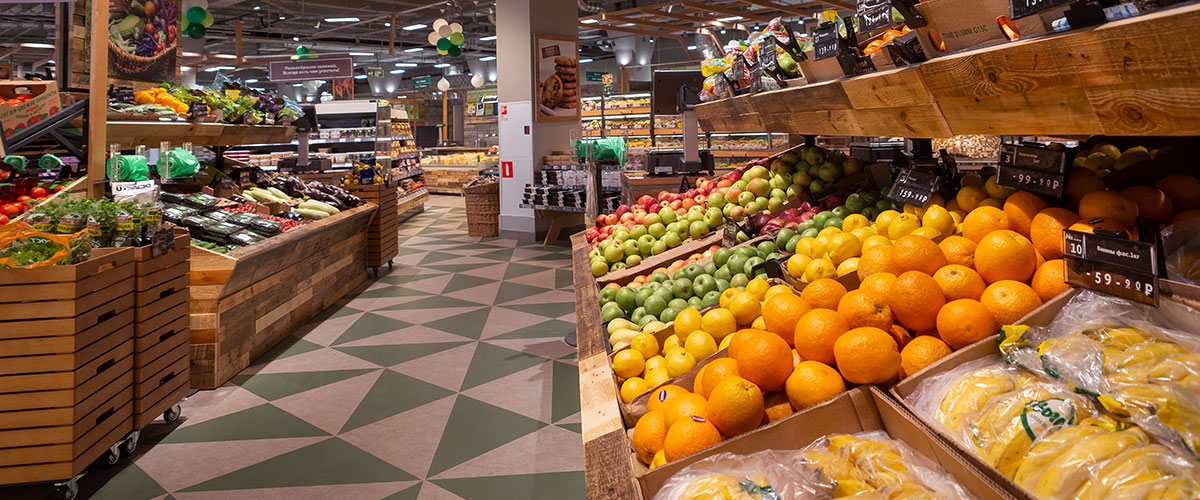
CAN YOU GIVE AN EXAMPLE OF A “SHOPPING CENTER – FOOD ANCHOR” PARTNERSHIP WITH PARTICULARLY HIGH SYNERGETIC COACTION?
We have just signed a contract with X5 Group, the food retail leader in Russia. Perekrestok shops will be located at two neighborhood centers that are scheduled to open before the end of this year, and even more are being planned for our future openings. Together, we have studied everything about the market landscape in given districts, run surveys among local residents, and found the best solutions to meet all needs and expectations.
WHERE CAN WE SEE CONCRETE EXAMPLES OF INNOVATIVE CONCEPTS FOR THE COOPERATION OF SHOPPING CENTERS AND FOOD ANCHORS IN THE CONTEXT OF DIGITALIZATION AND SUSTAINABILITY?
We, as well as our partners, understand the importance of digital tools, which is why we have a mobile app via which we integrate personalized special offers available from all of our partners and share the program of activities at our neighborhood centers. Moreover, we are always happy to integrate sustainable initiatives together, for example: the separate recycling of bottle caps in conjunction with discounts for visitors.
WHAT ARE THE MAIN PROBLEM AREAS THAT COULD AGGRAVATE THE CONSTRUCTIVE COOPERATION BETWEEN SHOPPING CENTERS AND FOOD ANCHORS?
Due to the fact that the world is still going through the pandemic, I believe one of the biggest challenges for both shopping centers and food retailers is the risk of another full lockdown, as it will raise problems, such as a drop in offline traffic, rental rate issues, and the need for online tools. Nevertheless, I believe that sincere and open dialogue, as well as the rollout and continuous improvement of digital tools together with a strong and well-thought-out marketing strategy, can help us overcome even the most difficult times with minimal damage to both parties.
“Why food anchors are a must at Ukrainian shopping centers”

Vitalii Boiko
CEO of NAI Ukraine
Credit: Credit: NAI Ukraine
WHAT ECONOMIC BENEFITS DOES A SHOPPING CENTER GAIN FROM A TENANT MIX WITH A STRONG FOOD ANCHOR?
The development concept of shopping and entertainment centers in the post-soviet countries differed from others. If the standard approach in most developed countries was to use department stores as anchors, then, for example, in Ukraine, there are still no traditional department stores.
Food retail has been, and remains, one of the most important anchors at shopping centers. When the first shopping and entertainment centers began to appear, in many post-soviet countries, the share of spending on food and FMCGs (Fast Moving Consumer Goods) was about 50% of the monthly income. Another important factor is the emergence of hypermarkets. They contained 60% of non-food items, which were in short supply at that time. When the first Metro Cash and Carry was opened in Luhansk (Ukraine), laptops became the best-selling item.
Today, in our country, food operators are an essential anchor element at shopping and entertainment centers. With respect to the economic effect: Firstly, there is a high flow of visitors (1,000 to 15,000 people per day at hypermarkets); secondly, rental rates for food anchors in the Ukraine vary from 100 to 300 euros per square meter per year; thirdly, by having FMCGs, supermarkets are sometimes the main generators of traffic on weekdays, which allows other tenants to have more balanced sales throughout the week.
WHAT, IN RETURN, DO SUPERMARKET CHAINS GAIN FROM THEIR PRESENCE IN SHOPPING CENTERS, COMPARED TO STAND-ALONE LOCATIONS?
Supermarkets gain the same benefits within shopping malls as other tenants: synergy. A standard-sized supermarket could bring in 3,000 to 5,000 people, and a hypermarket could bring in 10,000 to 15,000 people. Footfall at regional shopping malls in Kyiv is up to 50,000 to 70,000 people per day, so there is an expanding audience for supermarket chains.
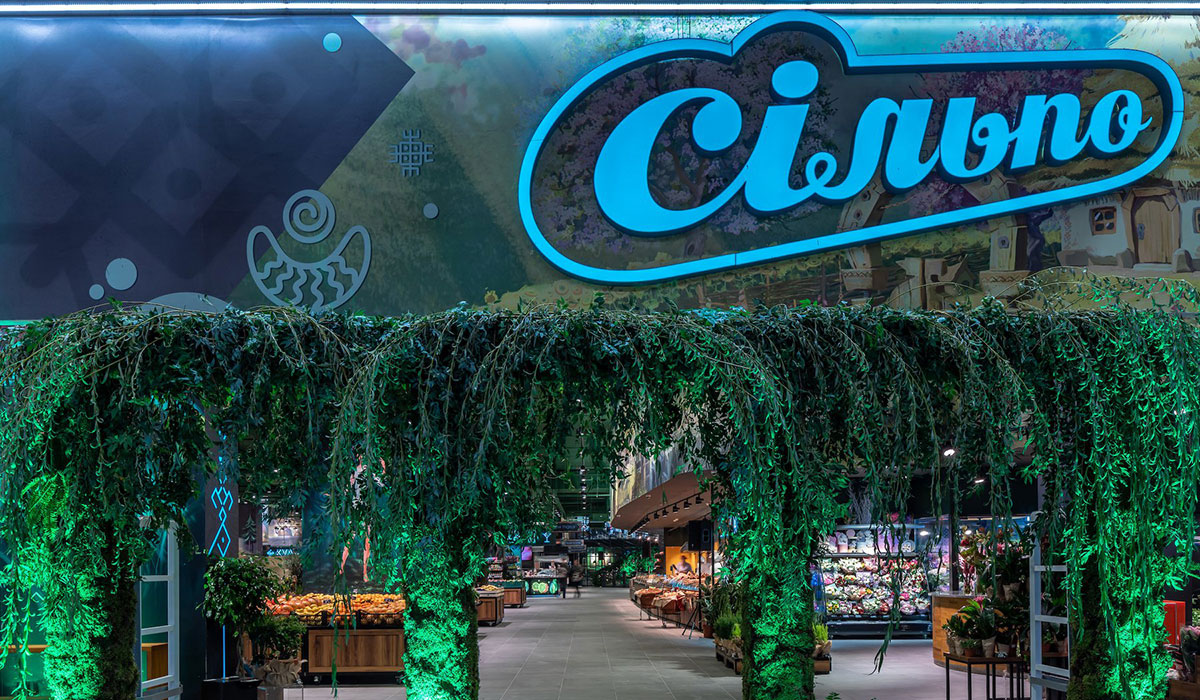
There is one other matter: Shopping centers are almost always the priority choice for weekend shopping. Not being part of a shopping center results in the loss of extremely high weekend spending, and, thus, less commercial effectiveness.
WHERE CAN WE SEE CONCRETE EXAMPLES OF INNOVATIVE CONCEPTS FOR THE COOPERATION OF SHOPPING CENTERS AND FOOD ANCHORS IN THE CONTEXT OF DIGITALIZATION AND SUSTAINABILITY?
Shopping centers create good platforms to develop online delivery and pick-up points, as showcased by the Auchan (French multinational retail group) hypermarket pick-up points, which are 40-square-meter stalls.
A striking example of the implementation of sustainable developments is the “Lavka Tradicii” project run by Silpo (Ukrainian grocery chain retailer). The project encourages the development of sustainable tourism, local culture, and local production. Today, 142 small producers are represented in the project, which sell their goods at more than 100 Silpo supermarkets.
WHAT ARE THE MAIN PROBLEM AREAS THAT COULD AGGRAVATE THE CONSTRUCTIVE COOPERATION BETWEEN SHOPPING CENTERS AND FOOD ANCHORS?
Supermarkets are striving to occupy a more profitable and convenient location, for example, on the ground floor. Large supermarkets are also keen to keep other large grocery tenants or specialty grocery stores out of a given facility. There may also be measures aimed at limiting the number of cafes and food courts due to competition; such challenges are being faced by operators.
There are a few potential problems for supermarkets: Shopping centers do not always take into account the requirements of retail operators in terms of the shape or size of the areas allocated for a supermarket, as well as the necessary communication channels between the utilities, the technological premises, and the sales area.
“Food halls with markets, kitchens, and taste blocks”
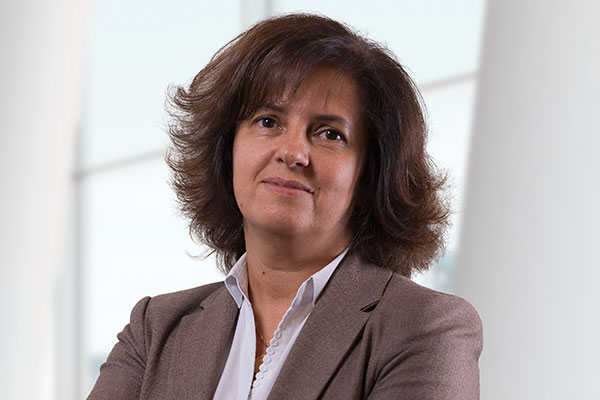
Christina Santos
Managing Director Sonae Sierra, responsible for property management
Credit: Sonae Sierra
WHAT ECONOMIC BENEFITS DOES A SHOPPING CENTER GAIN FROM A TENANT MIX WITH A STRONG FOOD ANCHOR?
A strong food offer has always been synonymous with lengthier visits, improved comfort and service, and, thus, increased preference and overall expenditure. At Sonae Sierra, we have long since moved away from the concept of adding a single food court or solitary food tenant as an anchor, preferring instead to make food courts an integral part of a shopping center.
We develop innovative food courts – or, as we call them, food halls – as new anchor concepts. Our strategy is to transform food and beverage (F&B) areas into key resources that create value for tenants and shopping centers. We consider food halls as the baseline for building different zones, like Markets, Kitchens, Taste Blocks, and other F&B areas, destined for a wider range of uses, such as: traditional, ethnic, and healthy. We have already rolled out several examples of this concept: Mercado Bom Sucesso (in Porto, Portugal), Mercado de Braga (Braga, Portugal), and a project that will be launched soon in Italy.
Our ParkLake shopping center in Bucharest, Romania, is a prime example of how a third-generation F&B zone can act as a successful anchor. It is positioned as a meeting point and offers an encounter with nature, linking interior and exterior spaces, which are connected to one of the largest parks in the city.
A second food hall example, located at Norte Shopping in Portugal, is “The CookBook”, which is comprised of a distinctive offer in a multifunctional space that is suitable for leisure, study, and work, and provides differentiated environments for socializing. Inspired by traditional markets with different gastronomic concepts, it brings the experiences of a street environment to the shopping center.
WHAT, IN RETURN, DO SUPERMARKET CHAINS GAIN FROM THEIR PRESENCE IN SHOPPING CENTERS, COMPARED TO STAND-ALONE LOCATIONS?
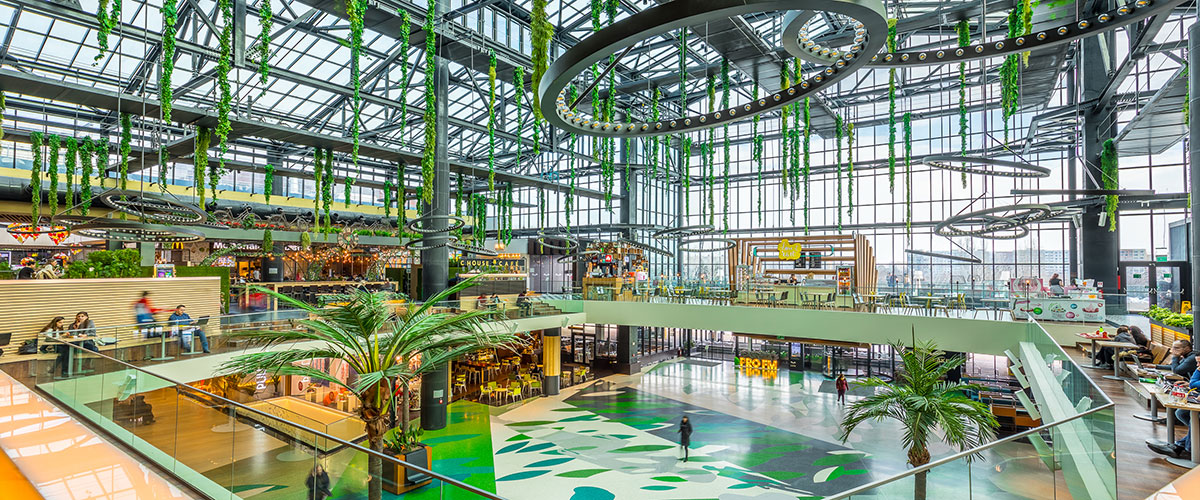
Supermarkets at shopping centers benefit from the overall tenant mix and available services, thereby increasing visitor purchasing efficiency and allowing for the satisfaction of several different needs in one visit.
Supermarkets are appealing not only due to their essential shopping characteristics, but due to the fact that they often encourage daily visits – even more so when they are part of a wider retail offer. Greater synergies can be achieved from innovative supermarket offers that include F&B concepts, ready meals, organic, healthy, and vegetarian food, fresh produce, and, more generally, a wide range of products and customer services.
WHERE CAN WE SEE CONCRETE EXAMPLES OF INNOVATIVE SHOPPING CENTER CONCEPTS IN THE CONTEXT OF DIGITALIZATION?
With respect to digitalization, we began to integrate an omnichannel approach into our centers long before the accelerating forces of the pandemic. Some of the largest stores also have omnichannel capabilities, fulfilling online orders, too, including the provision of curbside pick-up, which is particularly convenient for customers as part of a broader shopping trip. We have online traffic lights that show the footfall at our centers, scanning solutions for presence registration, and integrated food ordering and delivery services.
“Enriched offerings, optimal convenience”

Sanna Yliniemi
Vice President Center Management at Citycon
Credit: Citycon
WHAT ECONOMIC BENEFITS DOES A SHOPPING CENTER GAIN FROM A TENANT MIX WITH A STRONG FOOD ANCHOR?
Strong grocery anchors are important as necessity-based services at our shopping centers. They create a steady footfall for shopping centers–despite the season, time of day, or economic cycle. Grocery stores increase consumer loyalty and, thus, the frequency of visits.
WHAT, IN RETURN, DO SUPERMARKET CHAINS GAIN FROM THEIR PRESENCE WITHIN SHOPPING CENTERS, COMPARED TO STAND-ALONE LOCATIONS?
Shopping centers can provide urban locations and convenient parking facilities to grocery stores, as well as an improved customer experience to their customers. Shopping centers are able to create synergies with other necessity-based services, such as pharmacies, municipal services, liquor stores, laundry facilities, etc., which supplement grocery store offerings.
CAN YOU GIVE AN EXAMPLE OF A “SHOPPING CENTER – FOOD ANCHOR” PARTNERSHIP WITH PARTICULARLY HIGH SYNERGETIC COACTION?
Iso Omena in the capital area of Finland is a great example. We have two hypermarkets there, Citymarket and Prisma, as well as a Lidl, and they are all next to each other. This creates a convenient way for consumers to do some of their shopping at a hypermarket and the rest of it at Lidl without having to drive from one stand-alone parking area to another. The hypermarkets and Lidl primarily cater to customers who arrive via car. In addition, Iso Omena has smaller grocery stores near the metro station that serve commuters and smaller households in the area.
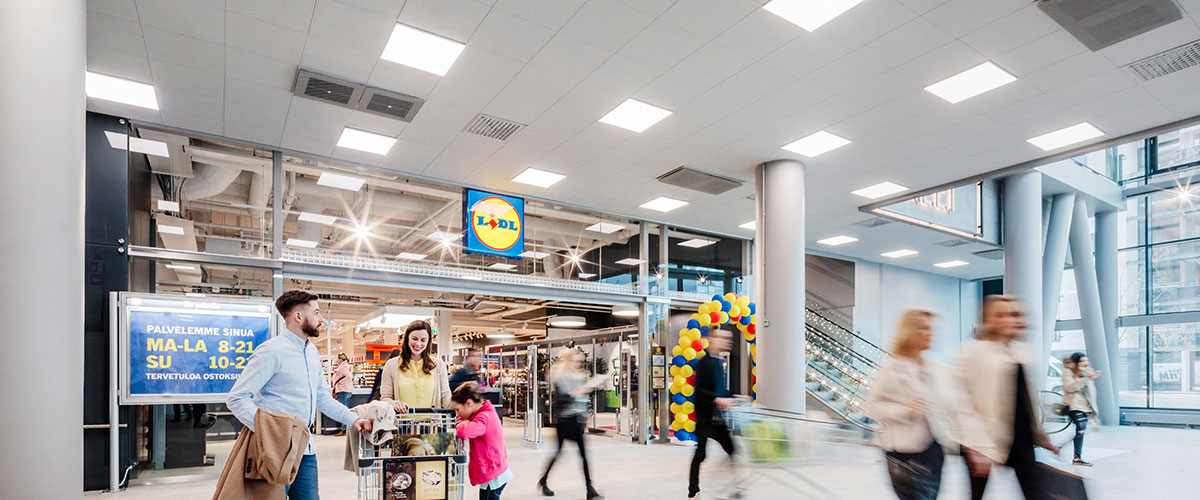
WHERE CAN WE SEE CONCRETE EXAMPLES OF INNOVATIVE CONCEPTS FOR THE COOPERATION OF SHOPPING CENTERS AND FOOD ANCHORS IN THE CONTEXT OF DIGITALIZATION AND SUSTAINABILITY?
Still using Iso Omena’s hypermarkets as an example: Both have an omnichannel solution in that they also offer the option of online shopping, either with the home delivery service or the drive-in pick-up service. When it comes to sustainability, energy efficiency is an area in which we collaborate with our tenants. At Buskerud Center in Norway, we use a large-scale cooling innovation to reduce energy consumption. Buskerud Center was the first shopping center in Norway to use CO2 as a refrigerant for the carbon-neutral comfort cooling of the entire building. The grocery store “Coop Obs!” (a Norwegian hypermarket chain) is part of this infrastructure in that the excess heat from its premises is recovered and re-used by the center for cooling or heating.
WHAT ARE THE MAIN PROBLEM AREAS THAT COULD AGGRAVATE THE CONSTRUCTIVE COOPERATION BETWEEN SHOPPING CENTERS AND FOOD ANCHORS?
I really cannot see any problems. The only thing I can think of is that it can be challenging to fit a new grocery store into an existing center; the premises need to be big enough, and the loading/goods delivery facilities need to be set up.
